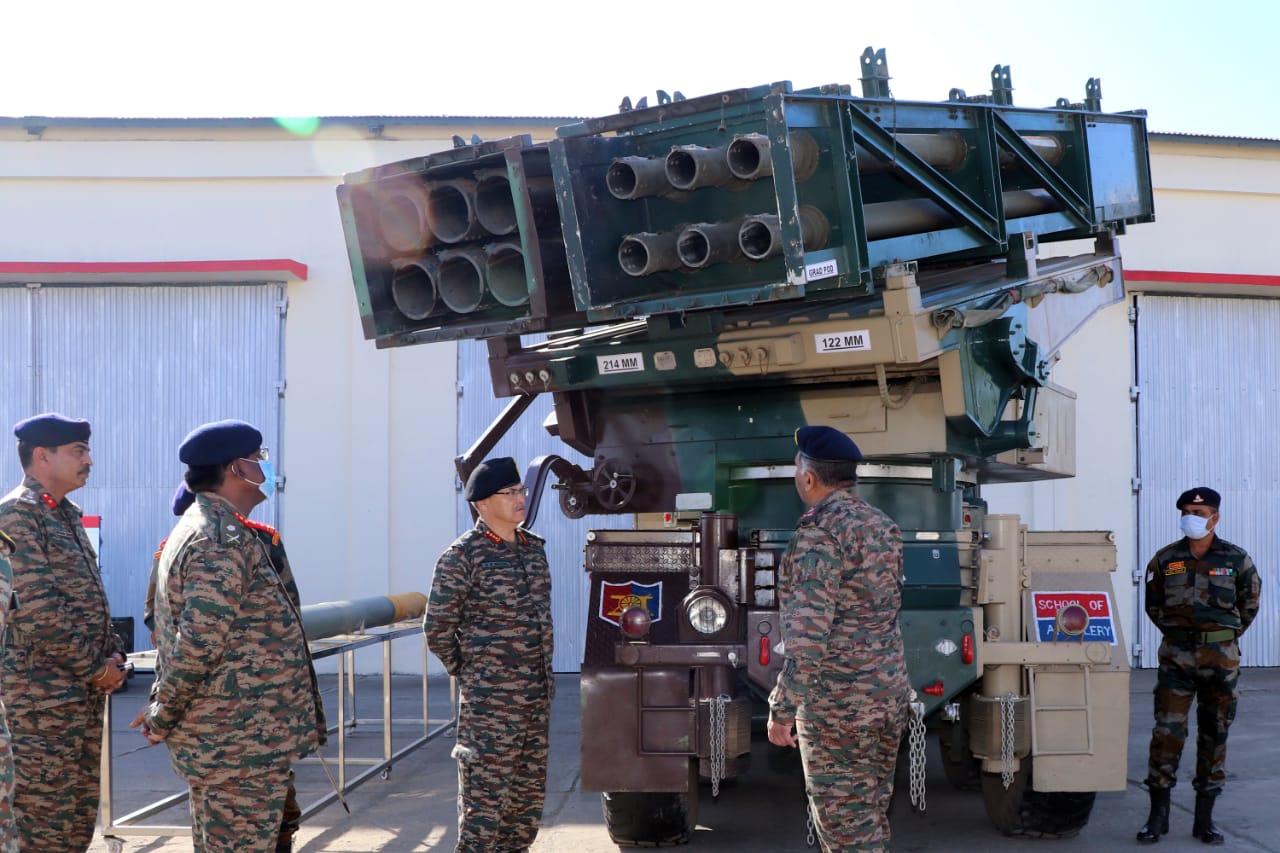SOURCE: IDRW.ORG


The Indian Army has initiated a strategic move to acquire and develop a cutting-edge Multi Barrel Loiter Munition (MBLM) System, a next-generation unmanned aerial platform designed to enhance its precision strike capabilities. Loiter munitions (LM), often referred to as “kamikaze drones,” are pre-fitted with warheads and can loiter over a designated target area, striking with pinpoint accuracy upon confirmation. This advanced system offers a tactical advantage by eliminating the need for additional personnel and allowing for mass deployment in battlefield conditions.
Loiter munitions represent a significant leap forward in modern warfare. Unlike traditional artillery or missile systems, these munitions can hover or loiter in the air over potential targets, gathering real-time intelligence before delivering a precise strike by crashing into the target. This ability to sense and strike dramatically improves the accuracy and effectiveness of the system, reducing collateral damage and ensuring high-value targets are neutralized.
The Indian Army’s vision for the MBLM system is particularly revolutionary as it seeks to integrate loiter munitions into existing artillery rocket systems such as the GRAD, PINAKA, and SMERCH. These platforms, already known for their capability to launch powerful rocket salvos, will now potentially gain the ability to launch loiter munitions, providing commanders with a highly versatile and deadly tool in the battlefield.
If successfully developed, the MBLM system will allow for the mass employment of loiter munitions without the need for additional manpower. This capability is expected to dramatically multiply the effectiveness of current artillery systems, enabling the Indian Army to conduct high-intensity, long-range precision strikes with minimal operational delay.
Key System Requirements and Challenges
The Indian Army has outlined several critical components that will be required for the development of the MBLM system. These subsystems include:
Ground-Based Simulator: To ensure seamless integration and operator proficiency, a simulator will be developed to train personnel in operating the MBLM system under various battlefield conditions.
Multi-Barrel Launch System: A system compatible with the GRAD, PINAKA, and SMERCH platforms, capable of launching 10 or more loiter munitions in salvo mode. This integration will enhance the volume and scale of attacks, ensuring saturation strikes on enemy targets.
Engine and Propulsion System: Advanced propulsion is required to ensure loiter munitions can cover long ranges and remain airborne for extended durations, awaiting target confirmation.
High-Speed Airframe with Actuators and Cable Harness: A robust and agile airframe is essential to withstand the rigors of flight and high-speed maneuvering, along with the actuators and electronics to control it effectively.
Onboard Flight Control Computer and Sensors: The LM system must have an onboard flight control computer capable of autonomous navigation, equipped with a suite of sensors to provide real-time situational awareness.
Long-Range Communication System: The system will require a reliable and secure communication link with data immunity and integrity, ensuring consistent control and feedback even in electronically contested environments.
Warhead and Fuse: The loiter munition will carry warheads designed for maximum lethality, with fuses that ensure precision detonation upon impact.
Anti-Jammer GPS/EO-IR Seeker: A key feature will be a seeker system equipped with anti-jamming GPS, Electro-Optical (EO), and Infrared (IR) capabilities, along with vision guidance to navigate in a jammed or GPS-denied environment.
Ground Control Station (GCS): The software and hardware of the GCS will be designed to control multiple loiter munitions simultaneously, allowing for coordinated strikes and efficient management of battlefield resources.
Strategic and Tactical Advantages
The integration of loiter munitions with the Indian Army’s existing artillery systems offers several tactical advantages:
Enhanced Operational Tempo: The rapid deployment of loiter munitions from existing platforms will enable commanders to respond swiftly to emerging threats on the battlefield.
Increased Versatility: Loiter munitions can be used in a wide range of missions, from surveillance and target acquisition to precision strikes, reducing the need for separate platforms for each role.
Cost-Effective Mass Employment: By launching multiple loiter munitions in salvo mode, the Army can achieve a greater level of saturation in the target area, ensuring that key assets are neutralized without the need for additional personnel or equipment.
Reduced Collateral Damage: The ability to confirm targets before striking allows for greater precision, minimizing the risk of unintended damage to civilian areas or non-combatants.
The development of the MBLM system represents a significant step forward in the modernization of India’s artillery and unmanned capabilities. As the Indian Army continues to explore and adopt advanced technologies, systems like the MBLM will play a critical role in ensuring that the country’s military forces are equipped to meet the challenges of 21st-century warfare.
NOTE : Article cannot be reproduced without written permission of idrw.org in any form even for YouTube Videos to avoid Copy right strikes. Websites doing illegal reproductions will get DMCA and Legal Notices.